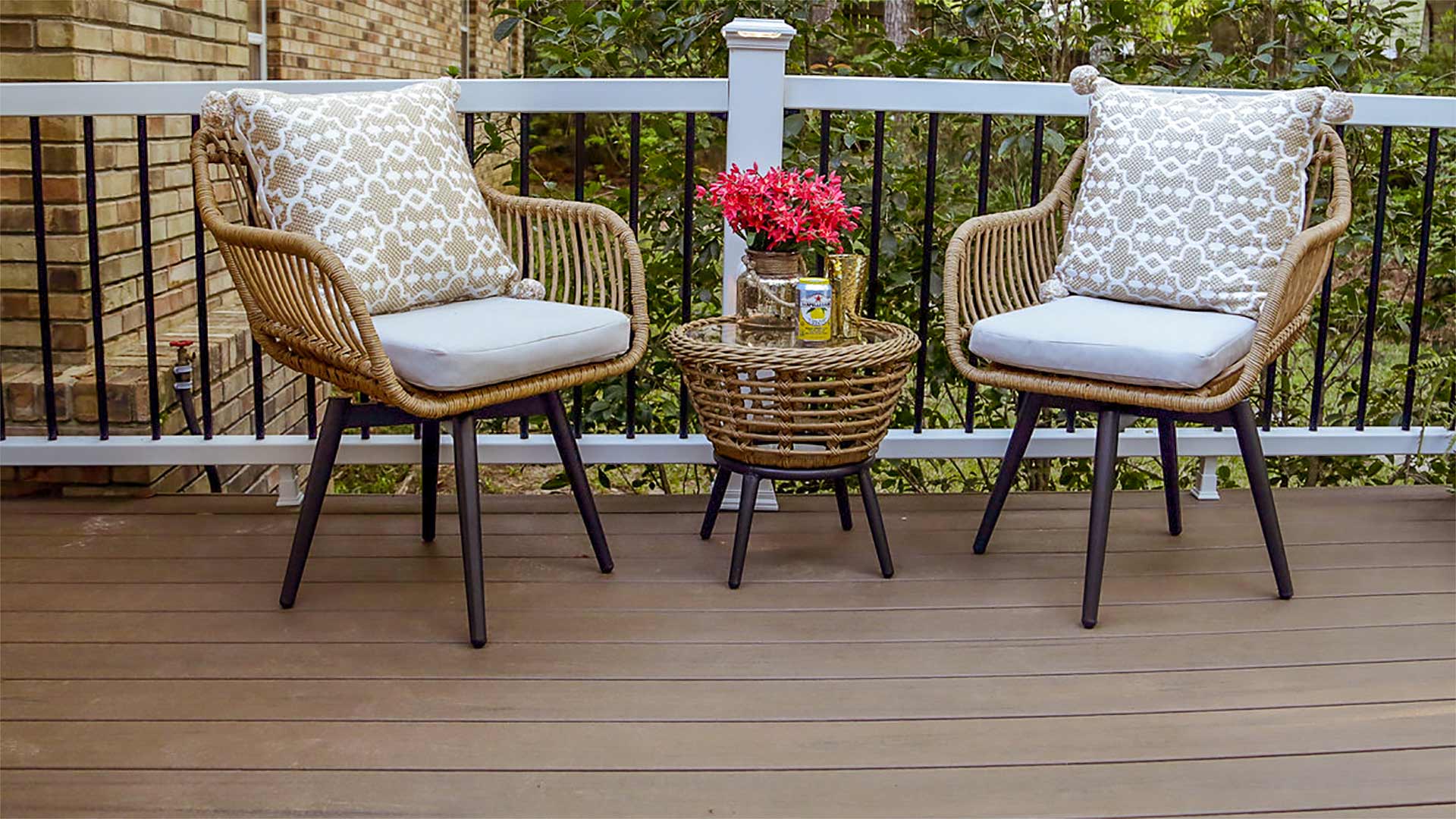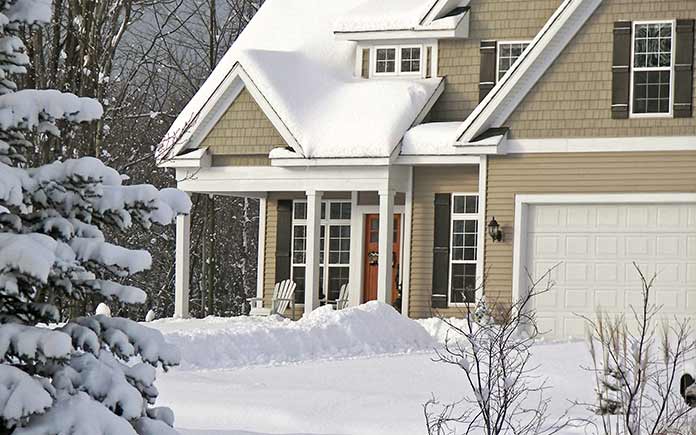
Homeowners often choose composite decking for its durability — the material will retain its quality through warm and cold weather, withstanding rain, snow, ice and hail.
Still, a harsh winter can cause visible damage.
In this article, we’ll share tips to protect your composite decking against severe weather, showing you simple ways to preserve your property.

1. Protect Your Deck Before a Storm
Prepare for a storm long before a frosty forecast — remove any dirt or mildew on your composite deck, clearing away buildup that might result in mold or stains.
Next, sweep away leaves and debris, scrub any grime, and scrape rust with a toilet brush until it’s gone.
Once you’ve cleaned your composite deck’s surface, check the area for any overhanging branches. They might seem harmless in the warmer months, but during the winter, fluctuating temperatures can create long icicles that can damage your property if they crack and fall. Trim your trees and this won’t be a problem!
Finally, move your deck furniture to storage. This will protect the material from deteriorating in inclement weather. If there’s no room in your garage or shed, you can always cover your furniture and place it on blocks.

Carefully shovel a snow-covered composite deck. Gouges can permanently ruin your deck.
2. Remove Snow with Caution
The morning after a snowstorm, you may look outside your window and feel overwhelmed at what you have to clear. To preserve your composite deck and your patience, exercise caution.
Carefully shovel — otherwise, you could accidentally scrape your deck’s surface and leave unsightly marks in the material. Avoid heavy shovels with metal blades; use a broom to brush away light snow.
Use pet-safe chemicals to melt any accumulated ice. Though many homeowners depend on their ice chippers to manually remove buildup, sharp edges can damage composite decking material. Use a de-icer with minimal impact on your deck and garden.
To select the right product, consider a solution containing calcium chloride. It’ll dissolve the ice and leave little more than a white residue behind.
The stains are easy to manage with water and mild soap, allowing you to assess damage without obstructions.
